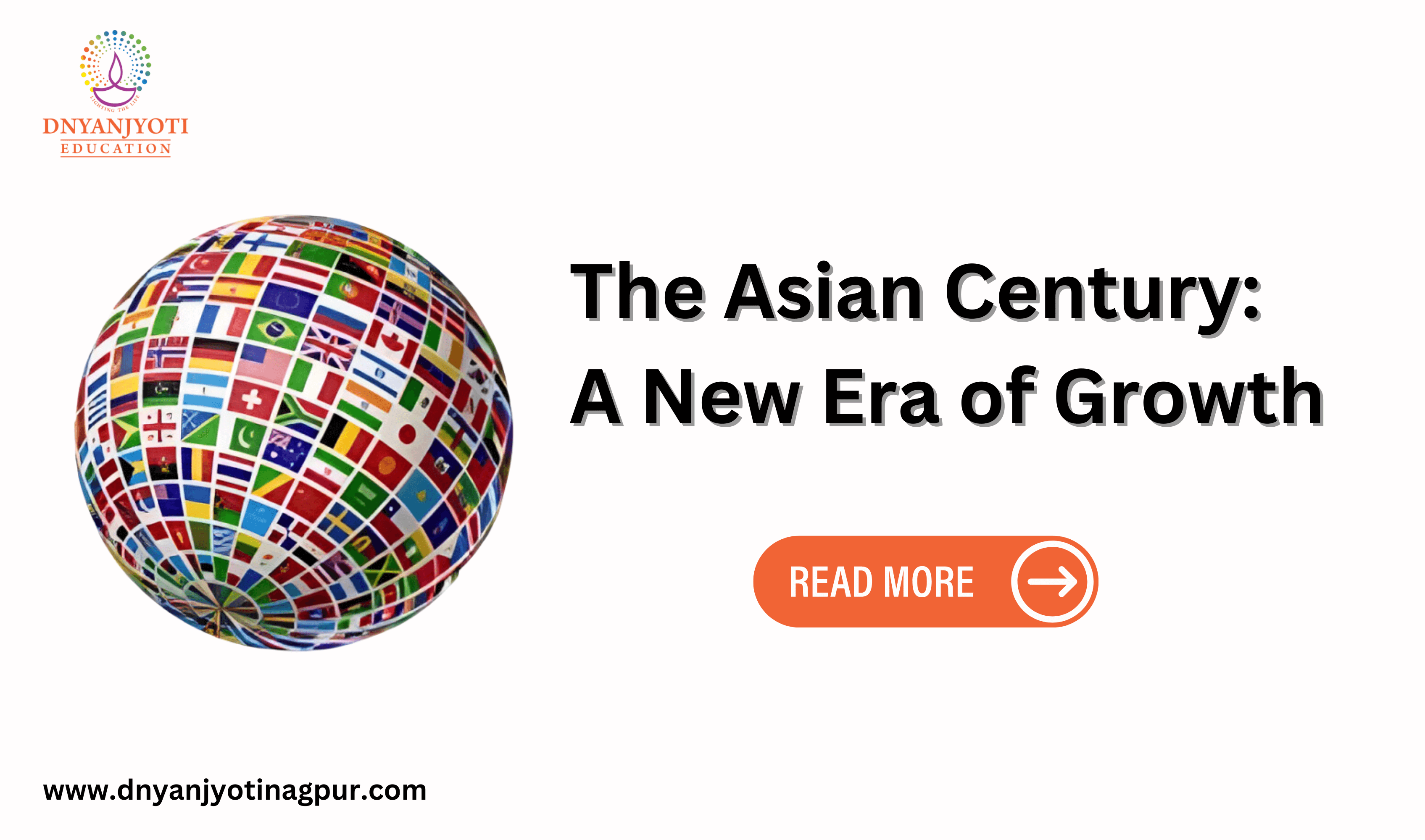The Asian Century:
- Asia is currently undergoing a significant change. If it continues on its current path, by 2050, the income of each person in Asia could become six times greater, when adjusted for the cost of living, reaching levels similar to those in Europe today.
- This means that around 3 billion more Asians could enjoy a good standard of living.
- By increasing its share of the world’s total economic output (Gross Domestic Product or GDP) to 52% by 2050, Asia would once again become a major economic powerhouse, similar to its position about 300 years ago, before the Industrial Revolution.
- The term “the Asian century” refers to the leading economic and political roles that China, India, and their neighboring countries are expected to play in the 21st century.
- This idea gained traction when China and India experienced rapid economic growth starting in the 1980s, making them among the world’s largest economies.
- Historically, Asia has been a significant force in the global economy. In the 19th century, western economies dominated, thanks to the Industrial Revolution.
- However, in recent decades, there has been growing anticipation that Asia will once again drive global economic growth.
- Many experts believe that the 19th century belonged to the United Kingdom, and the 20th century was dominated by the United States. Now, economists suggest that the 21st century may be referred to as the “Asian Century.”
There are several challenges to overcome in this journey:
- Growing inequality within countries, which could harm social harmony and stability.
- The risk of getting stuck in the “Middle Income Trap” for some nations due to various economic, social, and political factors.
- Increased competition for limited natural resources as more Asians aspire to higher living standards.
- Widening income gaps between countries, which could create instability in the region.
- The threats posed by global warming and climate change to agriculture, coastal areas, and major cities.
- Weak governance and institutions, which are issues faced by many countries.
Global Responsibilities:
As Asia’s influence and economic footprint grow globally, it will face new responsibilities and duties. The region should actively participate in shaping global rules rather than merely observing and following them. Asia should be seen as a responsible global citizen and carefully consider how its policies affect the region and the world.
As a rising global leader, Asia should contribute constructively to global governance without being overly assertive. It’s in Asia’s interest for the rest of the world to prosper economically and politically, as peace and security globally are crucial for long-term Asian prosperity. The Asian Century should promote shared global prosperity.
To make the most of the Asian Century:

- Invest in infrastructure to support manufacturing.
- Encourage research and development (R&D) through incentives.
- Develop large-scale innovation hubs to advance manufacturing and seize opportunities.
- Attract investments not only from within Asia but also from other parts of the world.
Conclusion:
The Asian Century is already underway. As the world shifts from globalization to regionalism, Asia is poised to take a leading role. India, in particular, can benefit from the opportunities arising from the region’s rapid integration and changing networks and flows, which will drive its next phase of growth.


